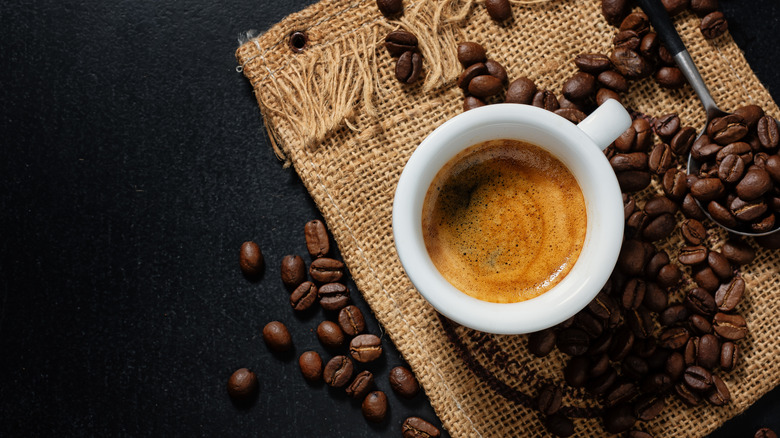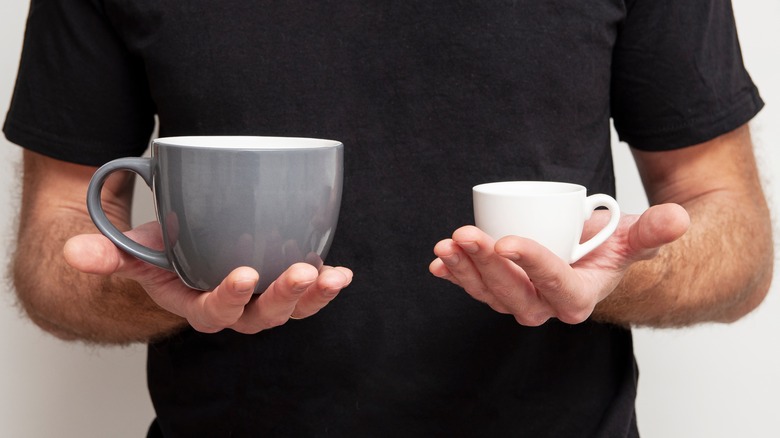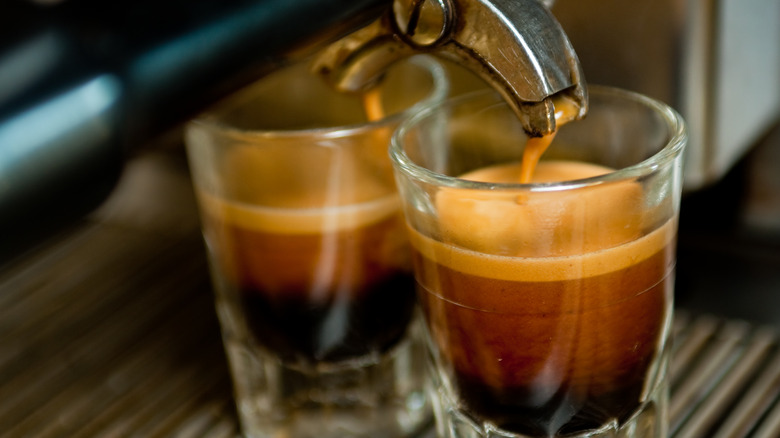Does Espresso Have More Caffeine Than Coffee?
If you're one of those people that find decaf coffee absolutely pointless, you're probably consuming that morning cup of joe for one reason and one reason only: caffeine. Whether you prefer to casually sip on a mug of coffee while you take in the morning news, or stop to shoot a shot of espresso on your walk to work for the ultimate quick jolt of energy, the ultimate end goal is a dose of alertness to get your day started. So which is the better option? Most people tend to assume that espresso has more caffeine compared to a cup of regular drip coffee, but it's not that cut and dry.
You may be surprised to learn that a serving of regular drip coffee actually has more caffeine than a shot of espresso, but there are two important factors that need to be taken into account: Concentration and quantity of consumption.
Does espresso or drip coffee have more caffeine?
When compared ounce-per-ounce, espresso does beat out regular drip coffee, having more than five times as much caffeine. According to the USDA, 2 ounce of brewed coffee has 12 milligrams of caffeine and, also per USDA, 1 ounce of espresso has 63.6 milligrams. But very few people consume either by the ounce.
A standard espresso cup, which is about 2 ounces and often referred to as a demitasse, has 127 milligrams of caffeine. Meanwhile, 8 ounces of coffee has only 96 milligrams. However, the typical drip coffee drinker is probably consuming more than eight ounces at a time. For reference, the standard coffee mugs that most people have in their cabinets hold anywhere between 11 and 15 ounces, and a coffee shop tall order contains 12 ounces of coffee.
If you order a 1.5-ounce doppio espresso at Starbucks, you'll be consuming 150 milligrams of caffeine. But if you order a 16-ounce (or grande) Pike Place, you'll be having more than double that at 310 milligrams. And for the iced coffee lovers, you'll be taking in slightly less caffeine than a hot option, with 205 milligrams for a 16-ounce cold brew and 280 milligrams for a nitro cold brew of the same size, but still more than an espresso.
So when you run the numbers, those opting for a morning shot or two of espresso are very likely to be taking in less caffeine than a typical drip coffee drinker, though in a much more concentrated form.
Why espresso can feel more energizing than coffee
There's a simple explanation as to why that doppio may make you feel more energized than a mug of dark roast: time. Unless you actually are a sophisticated Italian, odds are you don't leisurely sip on your shot of espresso. Most people tend to down the shot pretty quickly. That concentrated dose of caffeine you quickly down is going to be absorbed by your body and reach your central nervous system at a much quicker rate than when it is casually sipped out of a mug. Caffeine enters the bloodstream about 15 to 45 minutes after drinking it and its effects will peak at around 30 to 75 minutes. A shot of espresso may have less caffeine than a mug of drip coffee, but it may take you 45 minutes just to finish that mug and a matter of minutes (or seconds if you're really exhausted) to get through an espresso.
So when you're choosing the morning beverage that is going to give you the biggest bang for your buck in terms of energy, it's worth considering how quickly you plan on drinking it and how much you plan on consuming.


